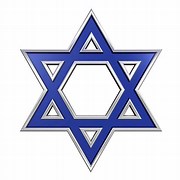Maastricht had various synagogues over the centuries. A letter from the aldermen dated 1295 mentions a platea judaeorum, now Jodenstraat, where, according to a manuscript from 1377, there must have been a synagogue, probably on the corner with the former Bokstraat, now Kesselskade. Nearby was the Jodenpoort, which gave access to the Maaskade.
At the end of the 18th century, and in any case from 1782 onwards, the Jews of Maastricht had a small house synagogue in a rear building on the Markt. Probably from 1797 onwards, the house synagogue was located above the entrance gate of the building at Kleine Gracht 3. This space was so cramped that the Jewish community requested permission to use the vacant chapel of the former Sint-Servaas Gasthuis, but this was demolished in 1821. Similar requests concerning the Augustijnenkerk and the Capucijnenkerk were also unsuccessful.
The new synagogue was built on the former grounds of a Capuchin monastery (the ‘kleine Capucijnentuin’, or ‘little Capuchin garden’) on the corner of Bogaardenstraat and Capucijnengang, a site that was made available free of charge by the municipality in 1838. The new place of worship was designed by city architect and art teacher Mathijs (Mathieu) Hermans (1789-1842). On August 21, 1840, the new main synagogue was inaugurated, with a festive procession from the Kleine Gracht, accompanied by military police and watched by thousands of interested onlookers, to the Bogaardenstraat, while the town hall carillon played. The new building also housed classrooms for the Jewish school founded in 1833.
After the deportation of the Maastricht Jews during the Second World War, the building was confiscated by the German occupiers and used as a warehouse. Much of the inventory was destroyed. However, the Torah scrolls were brought to safety in time. In 1965, it turned out that the archives of the Jewish community of Maastricht had also been preserved. After the liberation of Maastricht in September 1944, American soldiers helped clean up most of the chaos in the synagogue. In the early years, the adjacent meeting room was used as a prayer room. From 1952, services were held again in the provisionally restored synagogue. The synagogue was restored between 1964 and 1967, after which the building was ceremonially reopened on September 24, 1967.


